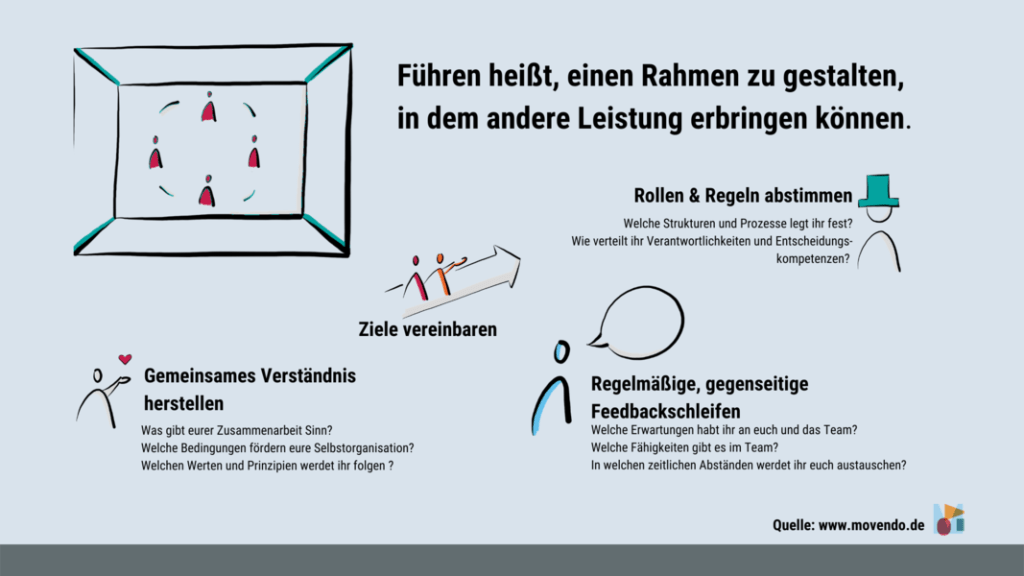09.02.2021
Created by Juliane Wiktorin
#favoritemodel No. 1 – “Leadership means creating a framework in which others can perform”.

This fundamental understanding of leadership not only illustrates my systemic perspective when working with managers, but also proves to be a very effective leadership model on several levels.
The added value clearly lies in broadening one’s own perspective and therefore not necessarily only looking at individual employees and their performance, but also zooming out, so to speak, and also taking a look at the framework conditions and interactions between those involved and the respective environments. This opens up completely new opportunities for leadership.
Instead of trying to change people through individual psychology (which is usually a very difficult undertaking after puberty and certainly not the task of leadership), we can look at the rules of the game in the team, favorable or unfavorable patterns and other routines and recognize their effects on the behavior of individuals.
After all, changes at these levels not only ensure more sustainable changes in the behavior of individual team members, but usually the entire team. This means that focusing on consciously shaping, maintaining and changing framework conditions is a very effective leadership intervention.
The second crucial aspect of this model is the distinction between employee performance and leadership behavior, which is introduced here.
Leadership does not mean doing the same thing that employees do, but ensuring that your own team can perform at its best.
Accordingly, the focus of management action must be on how to create and maintain a favorable dynamic in the team, how to create an atmosphere of openness and trust in order to give each other the necessary feedback, what orientation must be developed in order to give the team a common direction, and how roles and responsibilities are clarified in order to maintain efficiency in teamwork.
How does my #favoritemodel help you?
- If you are thinking about a supposedly difficult person in your environment, try zooming out. What conditions can be changed to bring about more favorable behavior? Under what conditions does this person actually show different behavior that you don’t find so problematic and how can these conditions be made permanent?
- Ask your team and discuss: What exactly do you need to be able to work successfully?
Author

Marc Chmielewski
Managing Director





